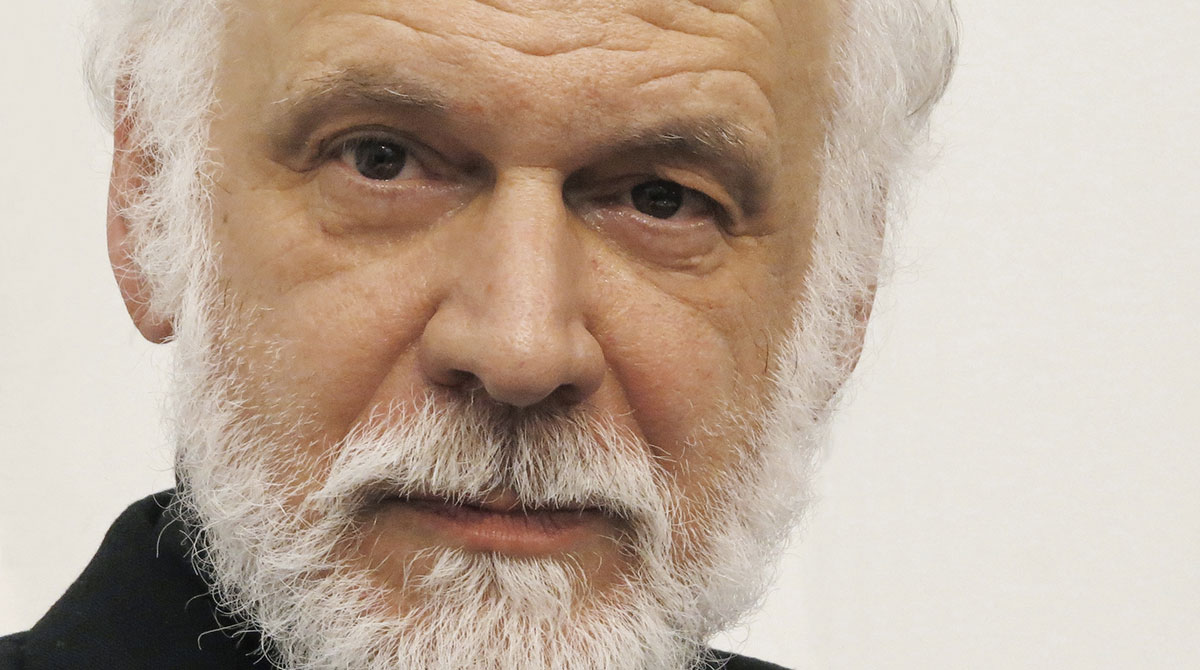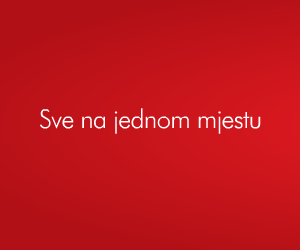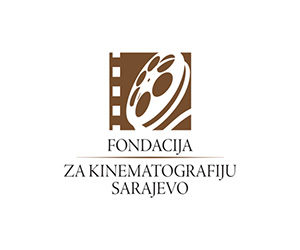
09/10/2024
Without eros, Njegoš's work loses its integrity, it is known that he loved women, although some see him as a saint
Dimitrije Popović, Croatian and Montenegrin painter and writer, one of the most important living artists from these parts, who exhibited with Salvador Dali and other great contemporary artists, is a guest of the 25th Mediterranean Film Festival and Forum "Youth Across Borders". Popović will give a lecture to the students and present his latest film "Aureole Microcosm".
Could you take us through your creative process? What does your everyday life look like when you paint?
Artistic creation is a kind of a process in itself. An artist is not only an emotional being, but also a thinking being, so he thinks about what he feels and what occupies him when dealing with a certain topic that he wants to express in one of the art media, whether it is classical or modern, drawing, painting, sculpture, or assemblage, installation or performance. Since absolute freedom does not exist, an artist must discipline his creative freedom in a certain way, not only within the framework of the creative process, but also in the temporal sense. This means I have to make sure that I have time to go to the studio regularly.
How do you choose the subjects you explore in your portraits? Is there a particular story or idea behind certain works?
Every painted or drawn face must have a reason for its existence. As a rule, these reasons are of a complex nature, because the chosen character is associated with a lot of details and often with a lot of phenomena. On this occasion, I'm specifically referring to the portraits of Franz Kafka that I did for the series of the same name fifteen years ago. Back in my high school days in Cetinje, I read the writer's short story "The Metamorphosis", which left a strong impression on my consciousness and was important for my formative years, for my affinity for the surreal and in general, interest in the otherworldly as an important part of human nature. My experience of Kafka's work was crucial for conceiving the writer's portraits. It was necessary to contextualise these portraits, which are characterised by a kind of psychologically surrealistic expression, in an artistically aesthetic and symbolic way. They suggest the thought of loneliness, fear, alienation, illness, death. All these phenomena are characteristic of human nature in general and thus make Kafka and his work current and always inspiring. In addition to the art cycle, I wrote the short story "The Process of Kafka's Metamorphosis" in 2012. I was interested in what the writer did not say anything about, how this metamorphosis from human to animal took place, how travelling salesman Gregor Samsa woke up one morning as insect.
How did your childhood influence your artistic path? Are there any family traditions that have inspired you?
My grandfather's brother, who was a polytechnic engineer, drew beautifully. There are no painters in my close family. Of course, it is difficult to determine where the great inclination I showed towards art as a child came from. I loved flipping through monographs and copying the reproductions of paintings by old masters. What was important for my artistic sensibility and what left a lasting impact on my boyhood consciousness was a painting of the Crucifixion of Christ by the German late Gothic painter Mathias Grunewald that I found in my home library in a German illustrated lexicon. Even now, I remember that experience well, the exciting watching of that powerful image of the dying body of Christ crucified on the cross in the dark surroundings of Golgotha. Echoes of this masterpiece from the Isenheim altar will be visible in some of the compositions of my cycle CORPUS MYSTICUM dedicated to Christ's Passion.
When did you first realise you wanted to be a painter? Is there a particular moment you remember?
I made the decision to engage in art professionally in high school. For a while in those high school days, I was fascinated by architecture, but I quickly gave up on such an idea. Anyway, I was a bad student. I had a correction exam in mathematics every year. When I say bad student, I don't mean problems with behaviour, but rather my failure to adhere to the program that we had to master. Instead of learning about the state structure of the SFRY, the economy of Poland or memorising the hyper-manganese formula, I read the books I wanted and took an interest in things that particularly attracted me, such as movies. In this sense, literature was just as important to me as fine art. Besides the above mentioned Kafka, I read the works of Lautreamont, Rimbaud, Baudelaire… As a student I received awards at high school art exhibitions. In addition to these school awards, my knowledge of art helped me a lot to "get through" the high school. What I will especially remember is an event from elementary school when we had to illustrate a story. My work was singled out and praised for in front of the students, as the teacher said, its "imagination." I drew the characters from that story in the reflections on the water surface of a lake that is mentioned in the plot of the story. This is how the characters got a surreal character. I am sorry that the drawing is lost like so many others from those early days of my youth.
What values are most important to you in art and life? How are they reflected in your work?
An artist must be honest with himself. He must be honest and have full confidence in what he does. If I tried to consciously deceive myself, to set something up for myself for some short-term, fleeting interest, some deceptive comfort, then I would let myself down in the worst way. An artist as a person must be consistent with his principles in life and work.
What were some of the biggest challenges you've faced throughout your career? How did you overcome them?
As a creator, the artist is facing permanent challenges. The challenges within the medium itself, which the artist deals with, are especially interesting. The beauty of creativity lies in these challenges. Also in everyday life, sometimes a banal situation can be challenging for artistic transposition, for some literary concept.
How do you imagine your artistic future? Are there any personal goals you would like to achieve in art?
The future happened on the day I started doing art. Here I am referring to that inner aspect of creativity. What is related to practical plans, exhibitions or book promotions, the realisation of which can depend on many external circumstances, is a totally different thing. But as far as that fundamental goal is concerned, it is the same in these late years of mine as it was when I was a young artist at the beginning of my career. Although I am much more mature today, which comes with the so-called life experience, the goal is basically unchanged. The meaning of this goal is that a certain idea that exists in my mental image becomes realised in an artistic creation, to the greatest extent possible, which in real form will be as similar as possible to that imagined image. This reflects the previously mentioned creative process. Every author strives, consciously or unconsciously, for some ideal form of the work, although he knows that it is impossible to achieve it. There is no such thing as a perfect work of art. There are only some degrees reached towards that unattainable perfection. Perfection resides in the idea. It (perfection) always escapes the work of art based on it. The history of art is a witness to this paradox. After Raphael, it was said that it was futile to paint more because the ideal of classical perfection had been realised... But Velasquez, Rembrandt, Rubens, Goya, Ingres, Delacroix... came after this Renaissance genius.
This is your first visit to Široki Brijeg, what are the names from art that you associate with this region?
I am really looking forward to visiting your city, and the first name that comes to mind is the great poet Antun Branko Šimić. I recently made a portrait of the poet for the deluxe edition of his collected poems. I had a friendly relationship with the great poet's niece and her family, a wonderful person of exceptional intellect and education, unfortunately the late Jerica Šimić Ljubenko. The name of friar Zovko is widely known. Of course, when it comes to your region and its rich cultural heritage, the role of the Franciscans is extremely important. I know that the painter Milan Galić is a native of Široki Brijeg.
What would you say to your former self today?
I am especially happy for visiting the Academy of Fine Arts. I am looking forward to meeting and speaking with students. It is delicate to give advice, especially when it comes to future artists, because each one is an individual with his own more or less formed views about his own professional path or the ambition he wants to achieve. That's why I prefer to answer their questions. It is nice that Široki Brijeg provides opportunities for education and training to young artists. I would tell my former self not to make rash decisions and to refrain from being dissatisfied with what was done, which resulted in the destruction of many works. Recently, I found two collages from 1971 in some covers in a chest in the house where I was born on Cetinje. I felt like my youth was briefly restored.
Your short film "Aureole Microcosm" will be screened at the Mediterranean Film Festival - you dealt with the works of Petar II Petrović Njegoš in an artistic and literary way?
Yes, I did a cycle of paintings, drawings and sculptures called "''Misterijum Luče mikrokozma" inspired by Njegoš's religiously mystical chant. On the occasion of the jubilee, 200 years since the poet's birth, I wrote the short story "Luča Njegoševe noći". Also inspired by Njegoš's poems, I made the graphic map "Aureole Microcosm". I gave the same title to the short film that is screened at the Mediterranean Film Festival, and it is a great honour for me to be invited to participate in such a prestigious film event. What Njegoš's poetic philosophical and religious mystical work deals with concerns those eternal problems of human beings in which good and evil exist permanently. That is why Njegoš is our contemporary. Human, that microcosm, is a tragic being with limited cognitive powers. He knows that as a punishment, because he sided with the demons in the fight against God, he was exiled to the earth in, as Njegoš says, "the breeding ground of human misfortune". In his existential suffering as a convict, man remembers the harmony he lived before exile and fall. Questions of good and evil are fundamental questions of human existence. But we should also keep in mind Njegoš's thought, "Man to man is the highest secret".
How did you come up with the idea to include the phenomenon of eroticism as a key component in the analysis of Njegoš's work? What do you think it adds to understanding of his work?
It adds a lot. Without Eros, his work loses its integrity, its expressive poetic richness. When it comes to Njegoš, it should always be emphasised that he was born as a poet, and by a combination of circumstances he became a bishop and ruler of Montenegro. So, as a true poet, Eros is important to Njegoš in the complex meaning that this term contains. The passion for creation in his impulsive romantic nature, then curiosity and the need for knowledge, the need for emotional connections and everything that would give the meaning of existence to a genius poet. Of course, eroticism is a particularly important part of his poetic personality. It is known that Njegoš loved women, although in various ways he tried to somehow put it aside. I wrote a study titled "The Eroticism of the Mountain Wreath" in which I analysed the Bishop's description of the beautiful Fatima. It is enough to pay attention to just a few metaphors in order to see all the beauty and inventiveness of the poet's gift, which transformed sensual passions into the gold of poetry.
How did you react to the controversies and criticism that followed the summer performance in Cetinje? Do you think that such reactions are expected considering the subject of the film?
Considering that I know the climate in some circles that still see Njegoš in those petrified frames without a modern approach to his work, I expected a reaction, but not to such an extent that even in the region, in the Great Serbian media, the "Cetinje Scandal" was being talked about, about the "Desecration of Njegoš" about debauchery and the like. I was criticised for the so-called blasphemy and provocation because the performance "Night gathers the ages" according to my concept was performed by pop star Severina Vučković in the atrium of Njegoš's billiards in Cetinje on the night of July 25, in the jubilee year of 230 years since the poet's birth. I considered that the performance was the ideal form to show a new visual treatment of the famous song in a contemporary way through stage expression. Namely, the song "Noć spruja vijeka", which in translation means that one night of love is more valuable than a whole century, represents one of the most beautiful songs of the romanticism. I considered Severina to be the person who could best express my idea. She performed her role excellently. Still, even today, many cannot come to terms with the fact that the bishop wrote such a passionate song, especially not those who perceive and see Njegoš as a saint. The performance was recorded and the visitors of the Mediterranean Film Festival will be able to see it because it is part of my film "Aureole Microcosm".
What is the main message you want to convey to viewers through this film, what do you want them to take with them after watching it?
The topic is complex because it is based on selected verses of Njegoš's thoughts about the nature of the human being, about the secret of existence, about the existential suffering of man who, through art, strives to reach a higher sphere of the spirit. He strives to make sense of his existence through creativity. The "Aureole Microcosm" is a symbolic spiritual sphere of a human being that expands with the light of creation, pushing the given boundaries, striving to reach higher, to get closer to the Creator and to become aware of God within. The verses I chose from the monodrama "Potonja Njegoševa ura" by Slobodan Tomović, along with selected pictures from my cycle "Misterium Luče Mikrokosma", are interpreted by the Montenegrin actor Slobodan Marunović.
How do you see the limits of artistic freedom in the context of the reinterpretation of classical works? Where do you draw the line?
Every creative reinterpretation is welcome in the sense that it enriches an artistic poetics with a new vision. It is enough just to look at Picasso's work. How many superb reinterpretations whose paradigm is the work of Velasquez, El Greco, Poussin, Monet, etc. Tradition is inseparable from modernity. It often represents a rich source for the contemporary creative spirit. Someone said a long time ago that myths are the sources of modernity. They were right.


